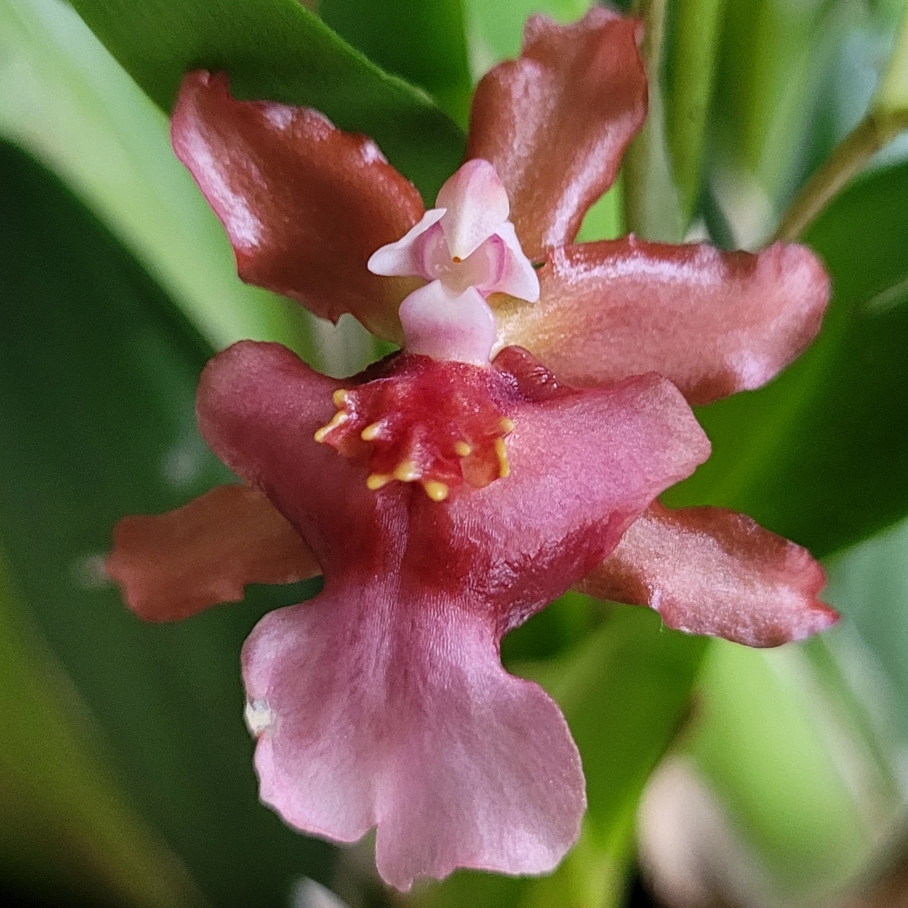
Oncidium 'Rosy Sunset'
Dancing Lady Orchid 'Rosy Sunset'
Intense colours, delicate markings and unusually shaped flowers make orchids ideal display plants. There are about 28,000 accepted species of orchid, distributed in about 763 genera. They can be terrestrial, epiphytic or lithophitic. Terrestrial orchids can be rhizomatous or form underground tubers. Epiphytic orchids use other plants, rocks or fallen trees for anchorage. They have modified aerial roots that can sometimes be a few meters long. Lithophytes are plants that grow in or on rocks. Lithophytes feed off nutrients from rain water and nearby decaying plants, including their own dead tissue. Most orchids are easy to grow if the right conditions are met, usually these are to do with light, temperature, humidity and watering.
-
Partial shade
-
Occasional watering
-
Not Frost hardy
-
Moist and free draining
Common name
Dancing Lady Orchid 'Rosy Sunset'
Latin name
Oncidium 'Rosy Sunset'
type
Orchid
family
Orchidaceae
ph
5.0 - 8.0 Acid - Neutral
Plant & bloom calendar
-
Best time to plant
-
When the plant will bloom
full grown dimensions
 0.50 M
0.50 M
0.50 M
0.50 M
Oncidium 'Rosy Sunset'
Intense colours, delicate markings and unusually shaped flowers make orchids ideal display plants. There are about 28,000 accepted species of orchid, distributed in about 763 genera. They can be terrestrial, epiphytic or lithophitic. Terrestrial orchids can be rhizomatous or form underground tubers. Epiphytic orchids use other plants, rocks or fallen trees for anchorage. They have modified aerial roots that can sometimes be a few meters long. Lithophytes are plants that grow in or on rocks. Lithophytes feed off nutrients from rain water and nearby decaying plants, including their own dead tissue. Most orchids are easy to grow if the right conditions are met, usually these are to do with light, temperature, humidity and watering.
Planting young plants
From Early Autumn TO Late Autumn
Sometimes small plantlets (keiki) appear from the nodes on the flower stems. Detach the plantlets when they have developed several good roots and pot them up in orchid compost. Water them sparingly at first, but mist them daily. Always use a proprietary orchid compost. Ensure good light levels in winter, as these are essential to encourage flowering. An east- or west-facing window would be ideal. Move to a shadier spot in summer and protect from direct sunshine. When planting terrestrial orchids outdoors, plant in semi-shade, no direct sun at midday. A very suitable place would also be on the north side of a building. Most orchids are woodland plants and therefore prefer cool sites, which do not become too dry and hot during summer. Places where ferns thrive are also suitable for. Don’t plant your orchids close to trees or big shrubs because their roots are effective competition for water and nutrients! Autumn is the best season for planting. Spread out the roots in the upper 10 cm (4 inches) of the soil, the rhizome 2-3 cm (1 inch) below the surface, shoot buds upwards. Fill in the remaining substrate without compressing it, and water thoroughly.
Flowering
From Early Spring TO Late Winter
Many orchids do not have a flowering season and flowers may be produced at any time if the right conditions are being met. Terrestrial orchids grown outdoors will mostly flower in the summer months. Flowers can last for several months.









